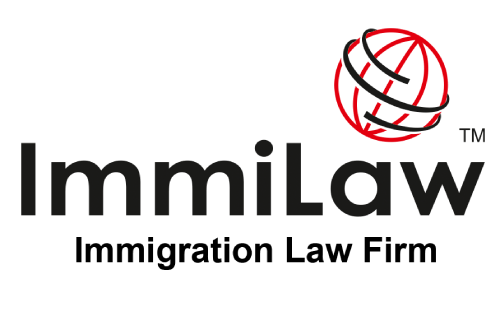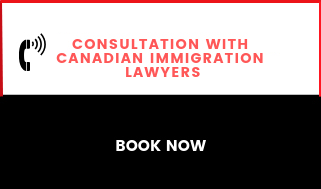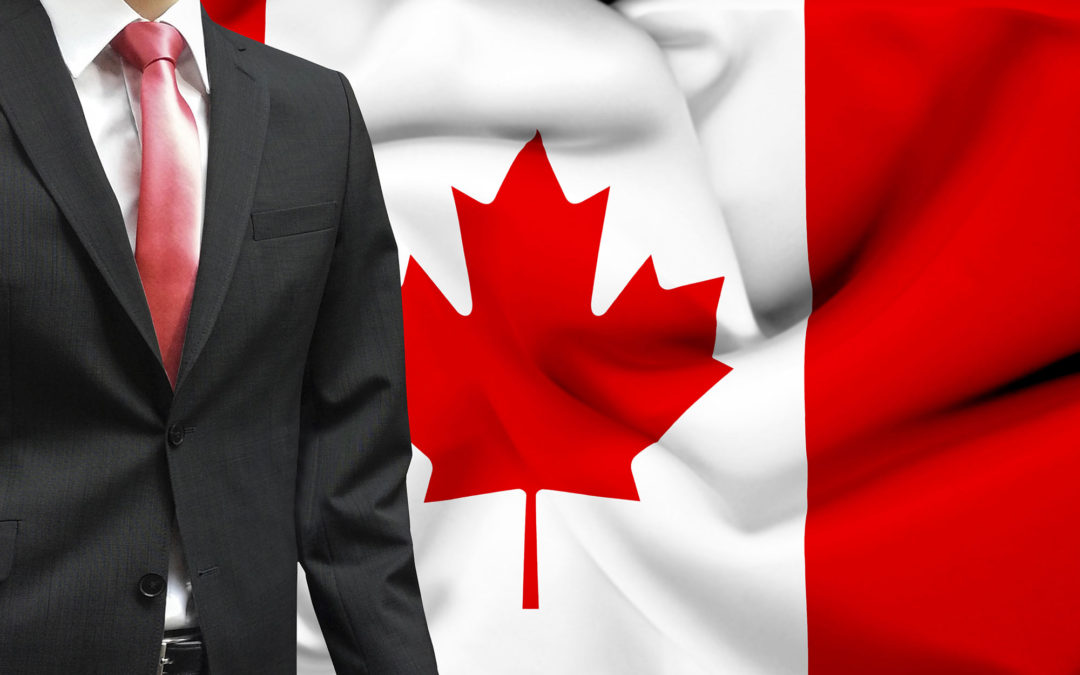
by Immilaw Team | Dec 15, 2021 | Canada Immigration
It is not compulsory for any applicant planning to move to Canada to hire an immigration lawyer to help them in the process. However, hiring one has many benefits—the success of your immigration application increases when you hire an experienced and trustworthy immigration lawyer.
Filling up the Canadian immigration application form is a lengthy and complex process, which one should not take lightly. It entails a lot of paperwork and documentation, and the applicant has to cross many bureaucratic hurdles before the Canadian authorities issue the visa. This is true even when the applicant plans to temporarily stay in Canada (for a job or study).
Some applicants indeed take the trouble to fill out the form and assemble the related documents independently. However, in such a case, the chances of rejection of the immigration application are high and can cause a lot of heartaches. Therefore, hiring an experienced immigration lawyer to help you prepare your immigration application and present your case if there is an appeal or judicial review is perhaps the most surefire way to ease out of the entire immigration process.
Why is hiring a Canadian immigration lawyer the best option?
A Canadian immigration lawyer possesses a formal law degree from a recognized university and will have undergone comprehensive training in different branches of law. Additionally, law societies control the conduct of lawyers. Breaking any of their rules can lead to a suspension of their license.
About immigration, lawyers experienced in this field of law have extensive knowledge of immigration law and its latest changes. So, they can understand the implications of the law better. They are also better to identify, analyze, and synthesize Canadian immigration laws.
Canadian immigration law streams are vast, complicated, and diverse, and it is only lawyers who will understand and translate the legalese into a language that commoners can understand.
There are many pathways through which applicants can immigrate to Canada. Besides skilled worker programs, there are federal economic streams and PNPs. For this reason, each applicant will choose a different and most suitable path to immigrate to the country.
There is likely to be a basic level of confusion when many channels for immigration are available. An immigration lawyer can help give you information about a lesser-known stream and guide you through the ones you can take up.
An immigration lawyer will suggest the most suitable immigration plan for you and your family. They can also help you with suggestions and inform you about options available in case of unfavorable decisions by the visa authorities.
Immigration lawyers, regulated by various law societies, maintain basic knowledge of the law, service, and professional rules. In addition, any applicant can check the current professional status of the lawyer on the local bar association websites.
Immigration lawyers do charge a fee for the services that they provide. However, for those with strong dreams of immigrating to Canada, this is only an investment that will pay them back many times over once they move into the country.
It is better to engage an immigration lawyer because they are well-equipped to recognize potential issues during the immigration journey. For example, the IRCC or the provincial government may reject an immigration application for being incomplete or any other complex or vague reason. If you hire an immigration lawyer, it is easy for them to pick up any gaps, errors, or omissions and address them appropriately. You can then freely concentrate on other aspects of the immigration process.
A Canadian immigration lawyer can also handle other areas of concern for a would-be immigrant, like business laws and regulations or bringing family members to Canada as part of an entrepreneurship program.
The fact is that an increasing number of PR applications to Canada by those candidates that self-represent or hire immigration consultants get rejected by IRCC. Therefore, the most significant merit of hiring an immigration lawyer is that they can vastly improve the chances that your PR application case will succeed and litigate on your behalf if the need arises.
At ImmiLaw Immigration, our Canadian immigration lawyers can partner with you in your immigration journey to Canada and help you from start to finish. We can fast-track your work permit applications and make submissions and case representations on your behalf. You may contact our office at +1 833 343 3243 or +1 613-704-5757. In addition, you may write us at info@immilawimmigration.com. We will schedule a consultation with one of our top immigration lawyers.

by Immilaw Team | Dec 4, 2021 | Canada Immigration
Why have they refused to issue me a TRV?
Some of the reasons for TRV refusal include lack of travel history, strong family ties to Canada, length of stay, the real purpose of visit, current employment situation, documents that do not appear authentic, history of overstaying during a previous visit, etc.
But, in the case of TRV refusal, other options are available for the applicants.
Is it possible to file an appeal?
The IRCC does not give the applicant any rights to appeal, nor is a formal process available. However, you can reapply or request a judicial review.
You can get your case judicially reviewed if the IRCC/visa officer did not follow the due process and did not assess the application thoroughly based on the facts presented (you have to submit accompanying proof of your claim). The review will be successful only if the original application presents a strong case for approval.
Is it possible to apply again on my own?
It is always possible to apply on your own. But often fails, no matter how many times you resubmit the form. The visa office usually doesn’t approve an application from an individual whose last attempt failed.
In most cases, visa officers review the resubmitted applications, and they consider reviewing such applications a waste of their time. As a result, many of them immediately refuse the application without even going through it. Unfair but true.
How can your immigration law firm help?
We had helped many applicants obtain their Temporary Resident Visa successfully when they contacted us after failing one or more times. Visa officers pay more attention when assessing visa applications presented by immigration lawyers. Immigration lawyers know the entire assessment process and expect visa officers to follow the specified assessment procedure for applications duly. An immigration lawyer can challenge any oversight by the visa officer via a judicial review.
The visa office has to adequately justify any refusal to accept an application based on the facts presented in the application form. Any application refusal despite presenting a solid case by the applicant is worthy of putting up for a judicial review. Neither the visa offices nor the IRCC would want to waste time on a judicial review, which is why they approve strong cases presented by immigration lawyers.
Our expert immigration lawyers would properly organize the supporting documentation and resubmit a more robust application, which often gets approved. Then, the lawyer submits the application form via the lawyer Portal along with a submission letter supporting your application. The submission letter has 4–5 pages containing facts that address all the possible reasons for refusal.
If required, our experienced immigration lawyers will also include appropriate case laws from the Federal Court to address unfair reasons for visa refusal, like lack of travel history, strong ties to Canada, etc. Finally, we send a copy of the submission letter to our clients for review, and they get an opportunity to see how the lawyers present their cases.
Fill Out Immigration Assessment Form
If you wish to apply for a TRV or have suffered a TRV refusal, you may contact ImmiLaw Immigration at 613-276-1454. You can send your query to us at info@immilawimmigration.com. We will schedule a consultation for you with one of our immigration lawyers.
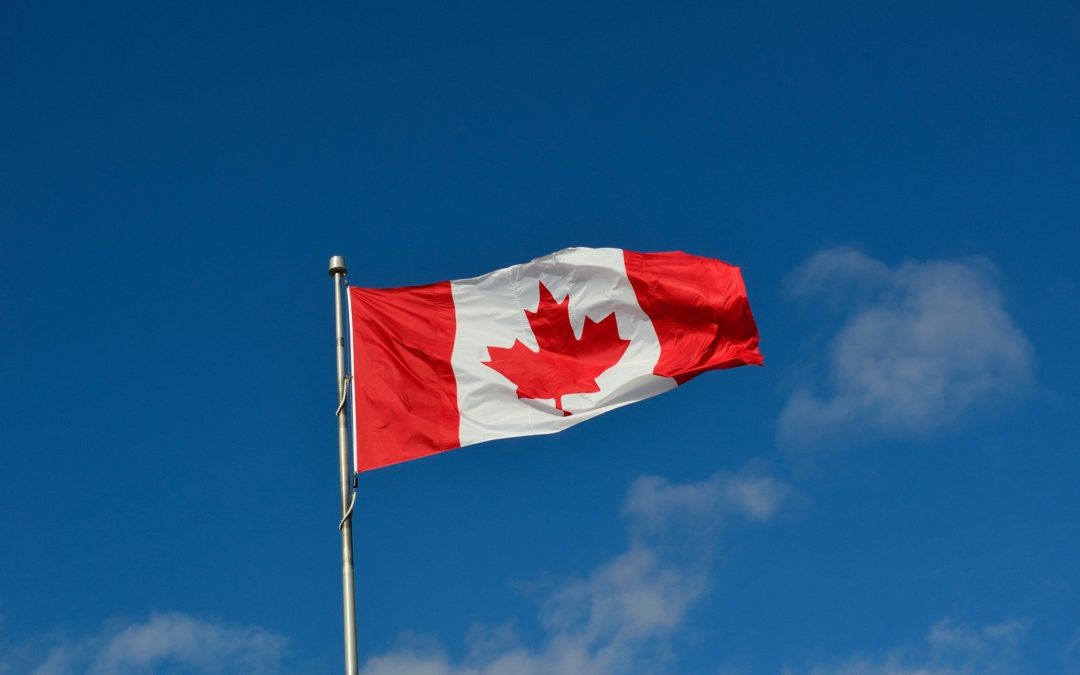
by Immilaw Team | Dec 3, 2021 | Canada Immigration
Why did they refuse your eTA (electronic Travel Authorization) / TRV (Temporary Resident Visa)?
There are many reasons for refusing eTA and TRV. Firstly, it depends on the type of visa; whereas visa-exempt countries require only an eTA, visa-required countries require a TRV. In addition, an eTA takes only up to 24–72 hours to process and issue. For TRV issuance, the screening process is more stringent and takes between 2 weeks and 4 months to complete. It also depends on the traffic at the visa office that is processing the document.
Reasons for refusal
TRV
Visa-required countries expect travelers to have a TRV, a form of travel authorization to the country before they board the plane at the airport. The government of Canada thoroughly scans people belonging to countries on the non-visa exempt list before allowing them entry into Canada.
The TRV application process is a lengthy and complicated affair. The applicant must submit personal and family information and support it with appropriate documentation. But there is no interview involved. The visa office relies exclusively on the facts provided in the application form and does not request any additional information. So the applicant has to present the case powerfully to receive a Temporary Resident Visa.
Due to a lack of understanding of the TRV issuance process, many individuals apply without seeking any help, which frequently results in a TRV refusal for many applicants. Once an applicant receives a rejection, they are flagged, and it becomes more difficult to receive approval on subsequent attempts.
The eTA and TRV have the same refusal reasons. But, TRV can be denied for 13 additional reasons during the screening.
TRV Refusal—Reasons
Lack of travel history: TRV refusal is common for applicants who have never traveled outside of their native country before and apply on their own. Our immigration law firm can help you overcome this rejection by including appropriate Federal Court cases and legal arguments.
Strong family ties to Canada: TRV refusal is common for applicants who apply independently and have close family members residing in Canada. Our immigration law firm can help you overcome this rejection by citing appropriate Federal Court cases and legal arguments.
Length of stay: Applicants who want to stay longer in the country have to show a significant amount of funds.
Failure to provide a compelling reason for visiting Canada may result in TRV refusal.
Other reasons include:
- Inauthentic documents
- Current employment situation
- Listing of personal assets
- The financial position of the host in Canada
- Lack of employment prospects in the native country
- Illegal residency status in the native country
- Others
eTA – Refusal Reasons
Applicants from visa-exempt countries suffer eTA refusal for inadmissibility reasons.
They are:
- Criminality
- Misrepresentation
- Previously deported
- Medical inadmissibility reasons
- Human rights violation reasons
Canadian visa authorities refuse TRV in cases where the applicant seeks the help of an unauthorized consultant to fill out the application form and organize the supporting documentation. These consultants also offer special deals, free evaluations, and guaranteed job offers.
Canadian law states that it is a criminal offense to indicate that a visa is guaranteed to a visa applicant. Therefore, consulting any third party which makes this kind of claim and attaching any fake job offer along with the application can result in a TRV refusal.
Working with a knowledgeable immigration lawyer to prepare and re-submit an eTA or TRV application often leads to higher chances of approval.
If you wish to apply for an eTA or a TRV, you can contact ImmiLaw Immigration today. If you have had a previous TRV/eTA refusal, we can restart the process to reapply for the visa. You may contact our office at 613-704-5757 or send your query to us at info@immilawimmigration.com. We will schedule a consultation with one of our professional immigration lawyers.
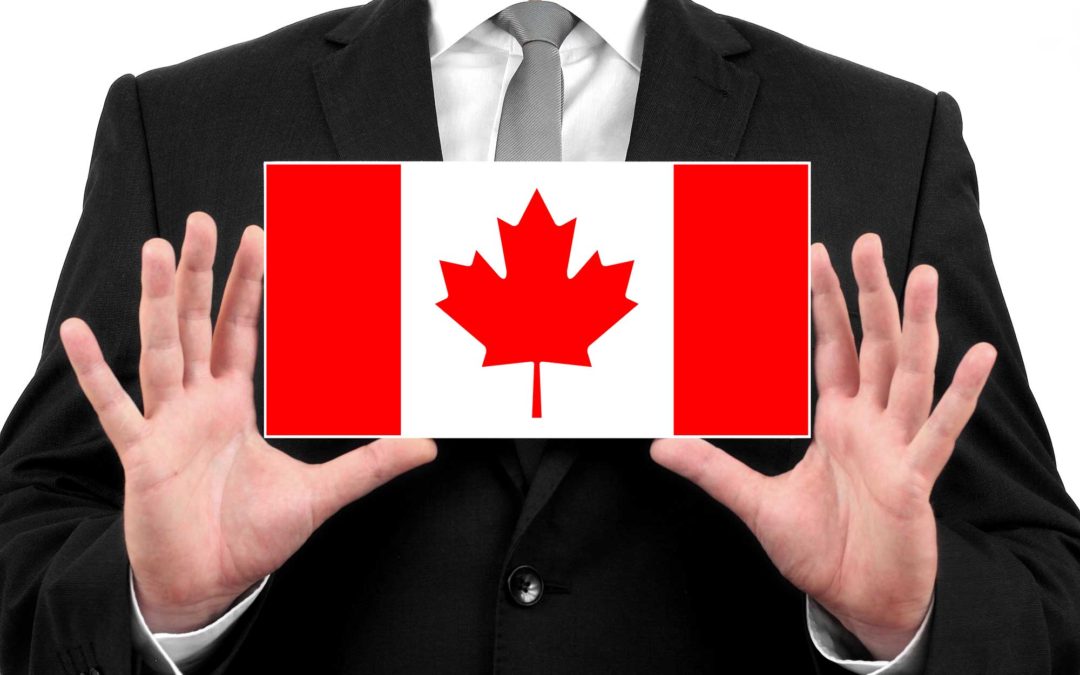
by Immilaw Team | Nov 3, 2021 | Canada Immigration
Immigration applicants under Express Entry have to earn a competitive CRS score (Comprehensive Ranking System) to receive a federal invitation. However, the applicants don’t need to have a job offer ready; express Entry candidates with high CRS stand a greater chance of getting a PR application approved.
The Provincial Nominee Program (PNP) is an alternate immigration route to Canada as popular as the Express Entry System. The PNPs set up by the different provinces strive to apply a more balanced set of criteria to allow a predetermined number of applicants every year to settle down in their provinces as permanent residents. Each province has its nomination criteria. For any applicant to be eligible to immigrate via a PNP, they must earn a nomination by the said province/territory.
How Does Saskatchewan PNP (SINP) Work?
Nine provinces and two territories in Canada, including Saskatchewan, have set up their PNPs. For example, the Saskatchewan Immigrant Nominee Program (SINP) offers two immigration pathways to Canada to earn a chance to work and live in the Saskatchewan Province of the country. In addition, the SINP is open to international immigrant applicants.
Saskatchewan is a province made up of prairies and is located in Western Canada. Activities such as farming, agriculture export, fishing, and forestry contribute to the province’s economy.
The SINP gives foreign nationals a chance to settle down and become permanent residents if they wish to do so. There are different streams of immigration that one can apply through SINP. However, two busy immigration pathway programs allow applicants to apply for permanent residence without a job offer.
1. Saskatchewan Express Entry-linked Scheme
An applicant intending to use this stream should have an active profile in the Express Entry scheme to apply. This enhanced version of the PNP allows candidates nominated by the Saskatchewan province to receive an additional 600 points towards the CRS score, guaranteeing a chance to apply for permanent residence here. To receive a nomination from Saskatchewan, the candidate should apply via Express Entry by creating a profile in the category and expressing an interest in settling down in the province.
To apply in the International Skilled Worker (Express Entry) category, the applicant must meet the following basic requirements:
- Score a minimum of 60 on 110 points on the SINP assessment grid;
- Have an active Express Entry Profile Number and the IRCC Job Seeker Validation Code;
- Meet language standards set by Express Entry and have test results in hand;
- Have minimal work experience levels in their field of training/education in a professed in-demand occupation in Saskatchewan (NOC 0, A, or B);
- Have a post-secondary school or training equivalent to a minimum of one year of Canadian education;
- Show the presence of adequate funds in hand to cover settlement fees in Saskatchewan.
2. Saskatchewan Occupation-in-Demand Scheme
residence in this category. The province prefers to allow applicants who have skills to fill gaps in the job market. To be eligible to apply through this scheme, the applicant should have at least one year’s experience in one of the jobs found in Saskatchewan’s list of Occupations In-Demand.
The following are the specific requirements that an applicant must meet to apply in the International Skilled Worker (Occupation In-Demand) category:
- Score a minimum of 60 on 110 points on the SINP assessment grid;
- Live outside Canada/have proof of legal status in Canada;
- Should not be a refugee claimant;
- Have scored at least four as per the Canadian Language Benchmark (CLB) tests;
- Should have completed post-secondary education/training/apprenticeship and must have an equivalent foreign education credential;
- Must have work experience that is related to the occupation/education;
- Must possess stipulated work experience related to their field of education/training in a skilled in-demand occupation in Saskatchewan at the time of application (NOC 0, A, or B);
- Show the presence of adequate funds in hand to cover settlement fees in Saskatchewan.
Saskatchewan has already invited 2,733 candidates via Saskatchewan Express Entry and 3,433 via Occupations In-Demand to apply for permanent residence in 2021. Ontario has also issued invitations through its PNP (Human Capital Priorities Stream), which does not require an applicant to have a ready job offer to apply for permanent residence in the province.
Contact Immilaw Immigration to find out more about your options for Canadian immigration, and you can fill out our immigration assessment form. You can call us at 613-276-1454, or you may send in your query at info@immilawimmigration.com. We will schedule a consultation for you with one of our immigration lawyers.

by Immilaw Team | Oct 29, 2021 | Study Abroad
Can you work while studying in Canada? Yes, but you need to meet certain requirements for that. The Government of Canada introduced changes to the terms and conditions that apply to study permits in 2014. With these changes, many international students have permission to work while studying in Canada. In addition, full-time international students can work for up to 20 hours a week when schools are open and take up full-time employment during the breaks.
It is also important to note that an international student cannot start working while studying in Canada unless the study course has commenced.
However, in some cases, the study permit will not allow an international student to work while pursuing studies in Canada, such as:
- When the study permit is for a course that is less than six months in duration
- The study permit specifies that the student holding the permit has restrictions when it comes to employment.
- Similarly, international students can work 20 hours a week even if they are not enrolled in full-time study programs.
- The student is currently in the last semester of a study program, and the full-time course load is absent as part of the requirements to complete the program.
- The student is pursuing graduate study and has already completed all the requirements as regards the coursework.
This can assist the international student in providing for themselves as well as meeting new people. This can prove to be valuable during a job hunt later on.
In cases where the study permit becomes invalid, the international student loses all authorization and has to stop working immediately. If an international student works without any legal authorization, they stand a chance of earning a ban on their immigration application.
Social Insurance Number (SIN)
Any international student who wants to work in Canada should first apply for a Social Insurance Number (SIN). It is compulsory for any person who is working in Canada to have a SIN. The student can submit the SIN application in person or send it in by mail. The following conditions (1 or 2 or both) need to be present in the application form:
- The student may accept employment on the institution’s campus (where they are registered for full-time studies)
- The student may accept on-or off-campus employment (if the student meets all eligibility criteria as per R186(f), (v) or (w) of the Immigration and Refugee Protection Regulations)
If these conditions are not yet included in the study permit, the student can request their addition.
Differences Between Off-Campus and On-Campus Work Permits:
Before the changes in 2014, study work permits were of two types: off-campus and on-campus types.
- Off-campus work permits allowed students to work anywhere outside of their educational institution.
- On-campus work permits allowed students to work only inside their educational campus premises.
For most work permits, the new regulations allow international students to work both on and off-campus.The authorization for the international student is clearly stated on the work permit. The work permit also clearly lists employment authorization and where the student can or not accept employment. Suppose a student desires to work during their study program, which is not explicitly mentioned on the permit. In that case, it is the student’s responsibility to get the work permit updated before venturing to take up employment.
PG (Post Graduation) Work Permit
This work permit allows any international student who has graduated from a DLI (Designated Learning Institution) to remain in Canada after their study period is over. The postgraduate student can work anywhere in the country for any employer for up to 3 years. However, only some programs at the DLI are eligible for a PG work permit. The student should apply within 180 days of receiving the confirmation of completion of the program for the PGWP.
Before enrolling in a study program, any international post-graduate student at the DLI who wishes to work should check their PGWP eligibility. The PG open work permit allows the student to work for any Canadian employer. In addition, this work experience can help an applicant qualify for permanent residence via the PNP or Canadian Experience Class program.
Co-Op Students and Interns – Work Permits
Students who are doing study courses requiring them to complete paid/unpaid Co-op/internship work experience for formal completion of the program are free to apply for a Co-op/intern work permit. But, they have to meet some specific conditions:
- The student must have a valid study permit in the first place.
- The study program should have a work component as a compulsory part of the course.
- The student should produce a supporting letter from the study institution, which states that the student should complete work requirements to get a degree formally.
- The Co-op/internship period makes up for less than 50% of the study course.
The study program cannot include the following:
- English/French as a second language course
- A general interest course
- A course that helps to prepare for another study program
On meeting all the criteria mentioned above, the student can apply for the work permit on paper or online via the website.
In cases where the institution indicates the need for a Co-op/internship in the initial letter of acceptance, and if the international student applicant includes the letter in the application for the Canadian study permit, the authorities process the work and the study permits together.
The student can apply for a Co-op work permit after obtaining the study permit on paper or online via the website. Again, the university/college will help out with this because the placement is part of the study program.
At ImmiLaw Immigration our Canadian immigration lawyers can help you to secure a work permit if you are an international student in Canada. We can also fast-track your study and work permit applications and make submissions on your behalf. You may contact our office at 613-276-1454. You can also send your query to us at info@immilawimmigration.com. We will schedule a consultation for you with one of our immigration lawyers.

